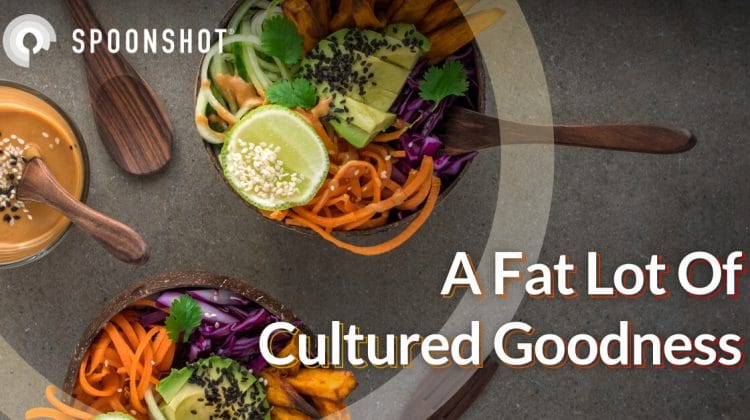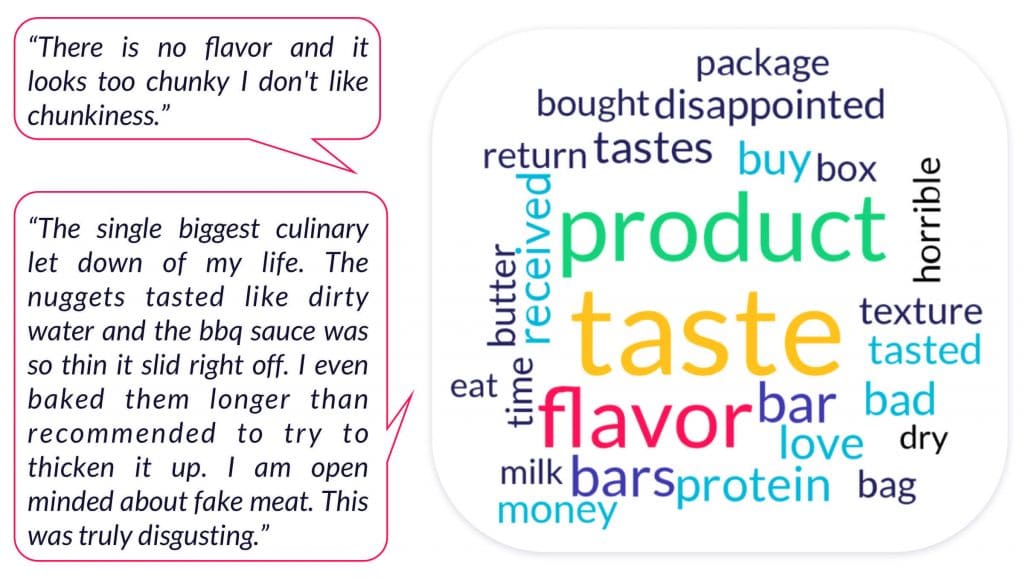
Cultured fat: tuck this phrase away for safekeeping, because it’s going to get big!
A bumper crop for plant-based
Whatever else happened, 2020 turned out to be a great year for alternative protein.
According to data from the Good Food Institute, this sector received investment capital worth €2.6 billion, more than triple the €830 million in 2019.
The alternative protein space spans lab-grown/cultured meat companies, fermentation companies, and plant-based meat, egg, and dairy companies. Two-thirds of the investment went into the plant-based players, pointing to its humongous potential in the coming years.
Our own analysis shows that 1 in 5 references to investments and funding is linked to alternative protein. In addition, the co-occurrence of investment and alternative protein went up by 76% between 2019 and 2020. This points to growing interest in investing in this space.
Business interest in investing in alternative protein

Challenges for an emerging sector
As promising as plant-based meat is, it is still pretty new and has plenty of kinks that need sorting out. Given that this relatively new segment is attempting to recreate meat with ‘not meat’, kinks are par for the course. Plants just may not offer exactly the same texture or mouthfeel as meat or even that umami, meaty flavor. Companies in this space are increasingly looking to get these elements right to ensure that customers are able to transition from meat to plant-based more easily.
We analyzed reviews of meat-free and plant-based protein products to understand the problems consumers faced. Our research revealed that the most common complaints about these products are about taste, flavor, and texture. Some of the reviews were pretty harsh.
Common complaints about alternative protein products

Cultivating a solution
Cultured fat comes in as a potential solution to issues of texture and mouthfeel in the alternative protein space. Cultured fat or cultivated fat is the lab-grown version of animal fat, which some might argue is the most important sensory ingredient in meat. Animal fat contributes to the look and texture of meat as well as to how it cooks and ultimately tastes. It adds juices and flavor to the meat and keeps it moist. This is exactly what plant-based meat makers want in their products.
Cultured fat is relatively new and has only emerged in the last 18 months, part of what is definitely going to be a slew of ancillary ingredients to come out of the lab with the specific aim of supporting plant-based meats.
Interest in cultured fat has quadrupled over the last year

This appears to be an extension of mimicking the marbling on meat, the much-prized white streaks of fat that improve flavor and texture while cooking. Currently, marbling in plant-based meats is done with plant-based fats like coconut oil, as Beyond Meat does, or with sunflower oil, as used by Juicy Marbles and 77 Foods.
Cultured fat uses animal cells to create animal fat in vitro, which is perfectly in keeping with minimizing the dependence on animals for food and our impact on the environment. A few companies have come up with novel ways of creating this cultivated fat, but thus far no products in the market use it. There has been significant interest in this, however, as plant-based meat companies look to increase their foothold in the market.
Belgian company Peace of Meat, which makes cultured chicken products, has created a stem cell-based bioreactor to cultivate animal fats from ducks and chicken. The company will be using animal fat in combination with plant-based protein to create hybrid foods that taste closer to conventional meat. The first products using this technology are expected to be available in 2022.
As the alternative protein space grows, we can expect to see a whole host of supporting innovations, like cultured fat, also emerge and evolve. Stabilizers, preservatives, colors, flavors, and various other additives to enhance the consumption experience may also receive this culture shock. Who knows, maybe in five years, we may be able to walk into a supermarket and pick up a jar of cultured lard or schmaltz!



Leave a Reply